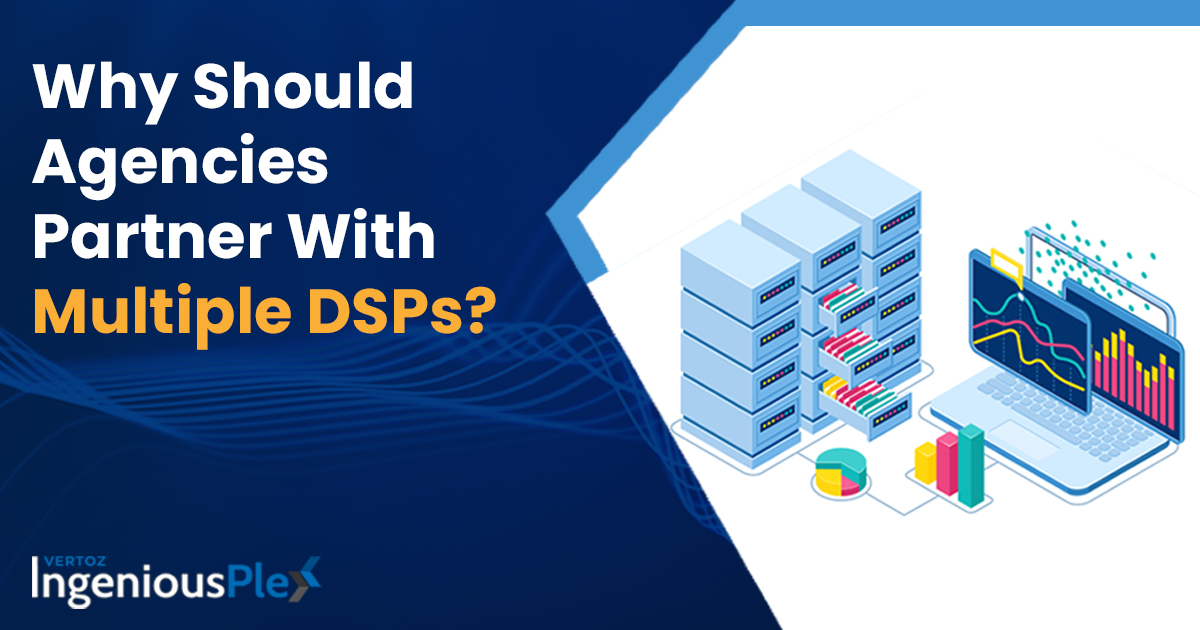Do you ever feel like your agency is facing stringent competition? That’s because it is. And the only way to survive this competition is to keep your business at par with the ever-changing and evolving technology. And for a digital agency, one of the most important factors to maintain an edge is driving results for their clients. Programmatic is the answer to many of the performance-related concerns and agencies are fast-embracing this novel technology. What more? To attain the desired scale, it’s become imperative for agencies to partner with not one but multiple DSPs.
Imagine a scenario where you spent so much of your time convincing your client to invest in programmatic advertising. Upon approval, you’re ready with a set budget, you created an audience based on the requirements of your client, made compelling creatives with attractive text, and launched the campaign with the best-possible targeting parameters. The campaign achieved success, but you were unable to attain the desired scale. To overcome this challenge, marketers use multiple DSPs. The shortcomings of one DSP often get compensated by the other one, thus the campaign does not suffer any limitations.
Why Should Marketers Partner With Multiple DSPs?

1. Features & Technology
Every DSP functions differently. Be it the technology or the features they offer. The bid submission and creation differ from DSP to DSP. For a bid to make it to an SSP auction, it should be won in internal auctions first. Other than this, the percentage of media spends charged by DSPs varies along with the convenience of use, the support offered, and many more. For example, one DSP may offer the best API but it can be too complicated, or the other one may provide the best hands-on support along with an easy-to-use interface.
2. Better Exposure
Working with one DSP may limit the success of the campaign, often due to a smaller audience because of ideal optimization strategies. The narrower the audience, the lesser it is. Partnering with multiple DSPs solves this issue by increasing the size of the potential audience, hence no compromisation on the scale. This is more specifically true for the campaigns that are niche-targeted and cannot attain the desired scale. Creating a similar audience on multiple DSPs can help agencies get better exposure and scale.
3. Managing The Risk
Publishers constantly work towards enhancing their yield by modifying their inventory distribution at the back-end. Now when they’re making changes to their inventory mix, even an excellent optimized strategy from the advertiser end may fail or disappear completely. To avoid this, if you’re partners with multiple DSPs, you’re able to move to different platforms which can help your campaign from being sent to the initial stage. Other than this, if your campaign is running on multiple platforms, your chances of winning in the auctions also increase, thus helping you gain more control and exposure.
4. Adopting Innovation
With new technology and innovations constantly making their way in programmatic media buying, it’s imperative for both sides of the ecosystem, the supply as well as demand-side to better and separate themselves from each other. The supply side is already embracing a multi-platform approach to optimize their yield management and gain better exposure among the advertisers. It’s about time that DSPs too should partner with multiple DSPs to kindle innovation at both ends of the ecosystem to deliver better to their clients.
Final Words:
Now, one of the major queries of marketers would be duplication. Meaning if the campaign is being run from multiple DSPs, wouldn’t there be duplication?
To be honest, yes, there will certainly be duplication, the question is if it’s a good thing.
You’re most likely to have various data sources to find audiences who’re looking for a similar product as yours which will lead to replication in any given circumstance. It’s not replication that you should be concerned about, but better insights into the data.
In absence of better insights into the data, you might fail to understand if the ‘exposure’ is beneficial to your business or just costing you money. In fact, for a client to convert, you’d certainly want to expose him to your ad more than once.
Adding multiple DSPs to your marketing mix will only help your business gain more visibility and gain better insights as to if the exposure is making more business for you.

